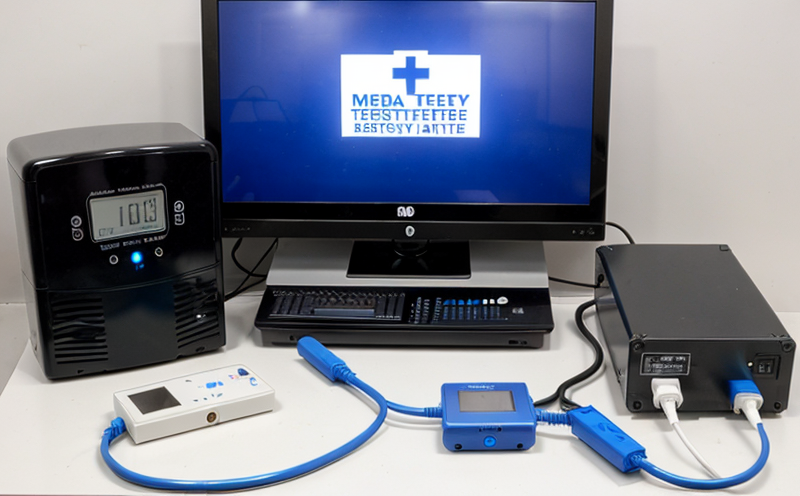ISO 14708-1 Active Implantable Medical Device Battery Safety Testing
The ISO 14708-1 standard provides comprehensive guidelines on the safety testing of batteries used in active implantable medical devices (AIMDs). AIMDs are critical components that power life-saving and life-enhancing technologies, such as pacemakers, defibrillators, neurostimulators, and hearing aids. Ensuring these devices are safe, reliable, and perform their intended functions is paramount to patient safety and regulatory compliance.
The standard covers a range of tests aimed at evaluating the mechanical integrity, electrical performance, and chemical stability of the battery. This ensures that the battery will not fail in a manner that could harm the patient or compromise the device's function. The testing protocols are designed to identify potential risks early on, allowing manufacturers to implement corrective actions before product release.
The key aspects of ISO 14708-1 include:
- Electrochemical performance tests
- Mechanical integrity assessments
- Thermal stability evaluations
- Electrical safety checks
- Environmental stress tests (humidity, temperature)
The testing process typically involves rigorous characterization of the battery under a variety of conditions to ensure it meets stringent requirements. This includes:
- Detailed analysis of cell chemistry and construction
- Measurement of voltage and current characteristics
- Evaluation of heat generation during operation
- Inspection for potential failure modes such as short circuits or leaks
The tests are conducted in controlled environments to simulate real-world conditions, ensuring the battery performs reliably under expected stressors. This includes accelerated aging and high-temperature storage tests, which help identify any latent defects that could manifest during device use.
Compliance with ISO 14708-1 is essential for medical device manufacturers seeking regulatory approval in Europe and other regions where this standard applies. It ensures that the battery used in AIMDs meets the highest safety standards, protecting patients from potential harm.
| Test Type | Description | Rationale |
|---|---|---|
| Electrochemical Performance Tests | Determining voltage and current characteristics under various load conditions. | Ensures the battery can deliver consistent power to the device. |
| Mechanical Integrity Assessments | Evaluating the battery's resistance to mechanical damage. | Avoids structural failures that could lead to internal shorts or leaks. |
| Thermal Stability Evaluations | Checking for thermal runaway and ensuring safe operation within specified temperature ranges. | Prevents overheating, which can cause device failure or patient harm. |
| Electrical Safety Checks | Assuring there are no unintended short circuits or other electrical hazards. | Guarantees the battery operates safely within the device. |
| Environmental Stress Tests | Subjecting the battery to extreme environmental conditions to assess durability. | Identifies potential weaknesses that could compromise performance in real-world use. |
Why It Matters
The safety and reliability of batteries used in active implantable medical devices cannot be overstated. These devices are often implanted for long durations, sometimes for the rest of a patient's life. Any failure could lead to severe health consequences or even death.
Battery safety testing under ISO 14708-1 ensures that:
- Patient safety is paramount
- Regulatory compliance is met
- Product performance is consistent and reliable
- The battery can withstand the rigors of real-world use
Failure to comply with these standards could result in significant legal, financial, and reputational risks for manufacturers. It also impacts public trust in medical technology.
The testing process not only ensures product safety but also enhances overall quality and reliability, which are critical factors in the development of AIMDs. By adhering to ISO 14708-1, manufacturers demonstrate their commitment to patient well-being and regulatory standards.
Quality and Reliability Assurance
The quality assurance process for battery testing under ISO 14708-1 involves several key steps:
- Initial specification review
- Battery design evaluation
- Pilot testing
- Full-scale production testing
- Post-production validation
Each stage of the process is critical to ensuring that the battery meets all safety and performance requirements. Initial specifications are carefully reviewed to ensure they align with the standard's guidelines. Design evaluations focus on identifying any potential risks early in development.
Pilot testing allows for iterative refinement of test methods and protocols, while full-scale production testing ensures consistency across large batches of batteries. Post-production validation provides a final check that all units meet safety criteria before release to market.
The use of advanced instrumentation and software tools plays a crucial role in the testing process. These tools provide precise data on battery performance under various conditions, enabling detailed analysis and troubleshooting. This ensures that any deviations from expected behavior can be quickly identified and addressed.
Regular audits and quality checks are also conducted to maintain compliance with ISO 14708-1 standards. This includes reviewing test results, updating procedures as necessary, and ensuring all personnel involved in the testing process are trained and certified according to best practices.
Use Cases and Application Examples
The application of ISO 14708-1 battery safety testing is wide-ranging across various medical devices. Here are some specific examples:
- Pacemakers: Ensuring the battery can power the device for at least five years without failure.
- Defibrillators: Testing to prevent sudden short circuits that could lead to device malfunction or patient harm.
- Neurostimulators: Evaluating battery performance under high-frequency electrical signals to ensure consistent power delivery.
- Hearing aids: Assessing the battery's durability in long-term use, particularly in harsh environments.
| Device Type | Main Battery Safety Concerns | Testing Requirements |
|---|---|---|
| Pacemaker | Longevity and consistent power delivery | Extended cycle life testing, high-temperature storage tests |
| Defibrillator | Sudden short circuits or electrical failures | Mechanical integrity assessments, high-voltage discharge tests |
| Neurostimulator | Electrical stability under complex signal conditions | Electrochemical performance tests, thermal stress testing |
| Hearing aid | Durability and reliability in daily use | Environmental stress tests, accelerated aging tests |
The detailed testing protocols ensure that each device's battery is robust enough to perform its critical function without compromising patient safety.





